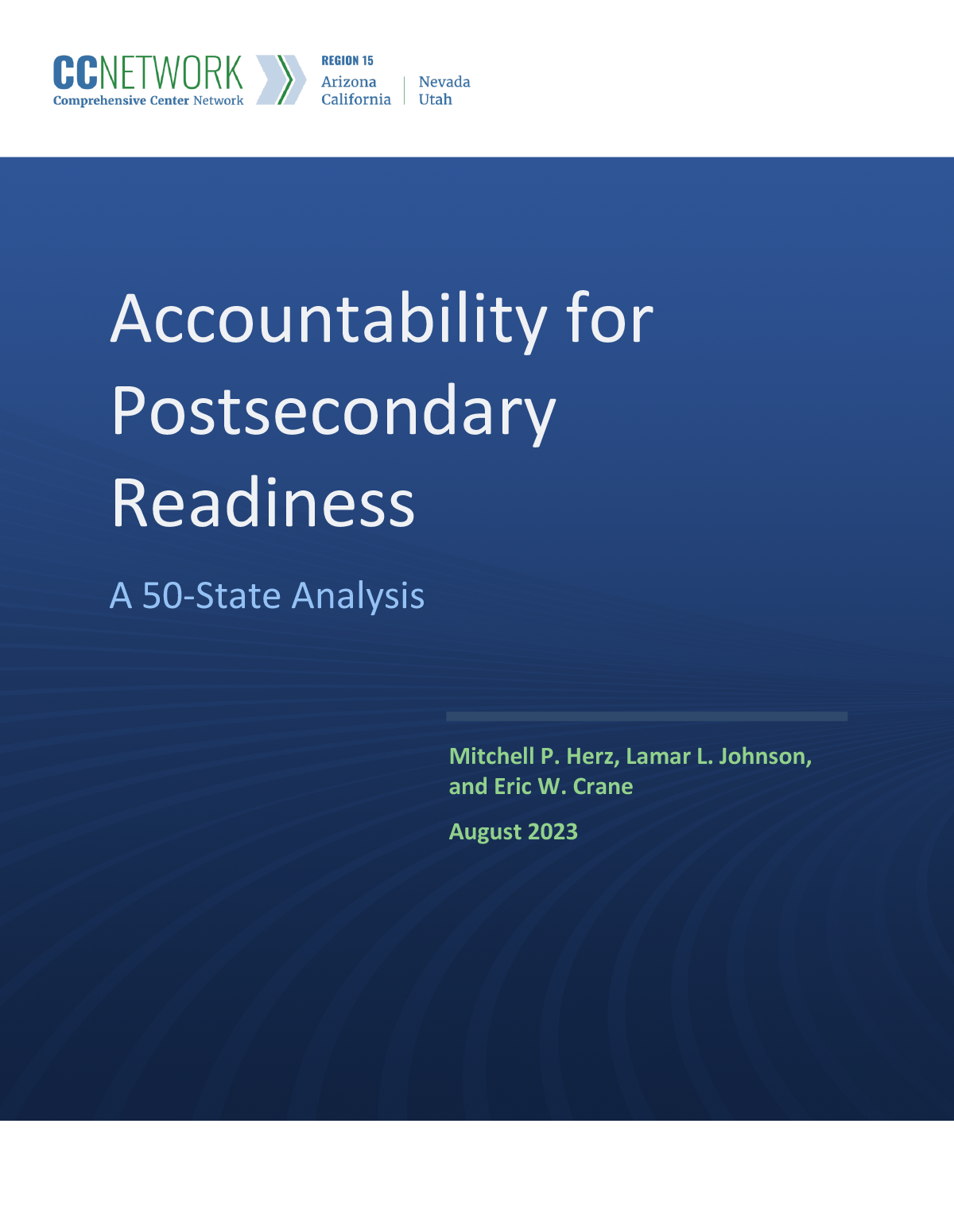Accountability for Postsecondary Readiness: A 50-State Analysis
Description
Postsecondary readiness enables students to pursue their dreams, contribute to society, and thrive in the global economy. Since many accountability systems include a postsecondary readiness indicator in formal evaluations of schools and districts, it benefits educators, families, researchers, policymakers, and other education partners to understand how postsecondary readiness is defined, measured, and used.
This brief, produced by the Region 15 Comprehensive Center, explains how states define and measure postsecondary readiness, an important step toward improving how such measures function within state accountability systems.
Key Findings
Region 15 Comprehensive Center staff identified four main findings about the use of postsecondary readiness indicators, the types of measures included in the indicators, and how much weight indicators are given in accountability systems.
- More than three of four ESSA plans contained a postsecondary readiness indicator.
- States included three main types of measures in postsecondary readiness indicators: academic, career, and military.
- Postsecondary readiness indicators focused most heavily on academic and career measures and less on military measures.
- Weighting of the postsecondary readiness indicator varies widely from state to state.
Resource Details
Product Information
Copyright: 2023Format: PDF
Pages: 15
Publisher: Region 15 Comprehensive Center at WestEd
Stay Connected
Subscribe to the E-Bulletin and receive regular updates on research, free resources, solutions, and job postings from WestEd.
Your download will be available after you subscribe, or choose no thanks.






